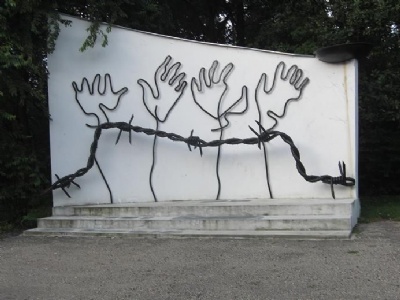Blechhammer
Blechhammer is located about sixty kilometres northwest of Auschwitz just outside a small town called Blachownia Slaska (german Blechhammer). In 1942, the Nazis set up a labor camp for Jews. The first prisoners who arrived were forced to work on building a chemical factory, but soon a typhoid epidemic broke out among the prisoners because of the inadequate living conditions in the camp. 120 Inmates were sent to Auschwitz where they were murdered and the remaining prisoners were transferred to a larger and newer camp nearby. New Jewish prisoners were sent to Blechhammer, the majority came from upper Silesia, but also Jews from fifteen other countries. Blechhammer eventually became a large camp complex with several camps and 48,000 prisoners went through the camp complex during its existence.
The prisoners were forced to live in substandard wooden barracks. The absence of running water and adequate sanitary facilities meant that the spread of typhoid fever and diarrhoea was extensive. The camp elder was a Jew from Vienna named Karl Demerer and he made himself known for daring to stand up to the camp management. In April 1944, Blechhammer became a satellite camp of Auschwitz III – Monowitz. The camp began to be evacuated in January 1945 as the Soviet Red army approached. About 4000 prisoners were forced out on Death marches to other camps further west. First, the prisoners ended up in Gross-Rosen and when Gross-Rosen was evacuated, the prisoners were sent to Buchenwald. About 800 people died during these evacuations. The prisoners who tried to hide in Blechhammer during the evacuation and discovered were shot on the spot.
Current status: Partly preserved/demolished with monument (2009).
Location: 50°21'30.49" N 18°19'18.69" E
Get there: Car.
Follow up in books: Kogon, Eugen: The Theory and Practice of Hell: The German Concentration Camps and the System Behind Them (2006).







It is a surprisingly site in the middle of nowhere and guardtowers, barbed wire fences and crematoria is preserved, although dilapidated. The absence of museum does not make the place less interesting, on the contrary, it can be at least as interesting with places like Blechhammer and not have to be crowded with other visitors. With a map of the camp you can easily orientate yourself around the site.